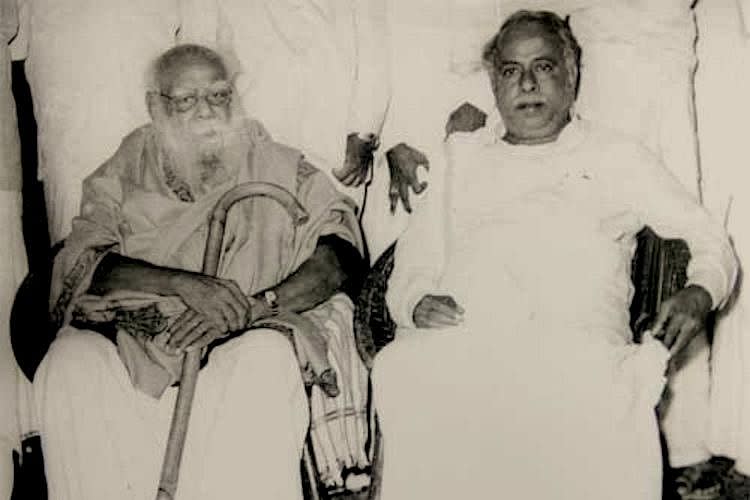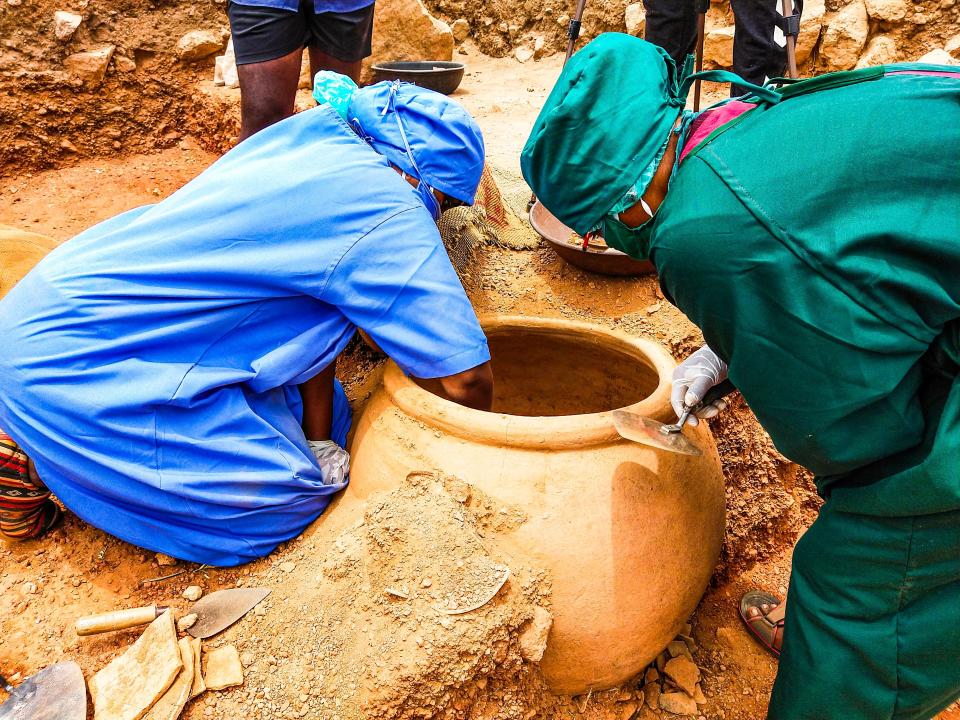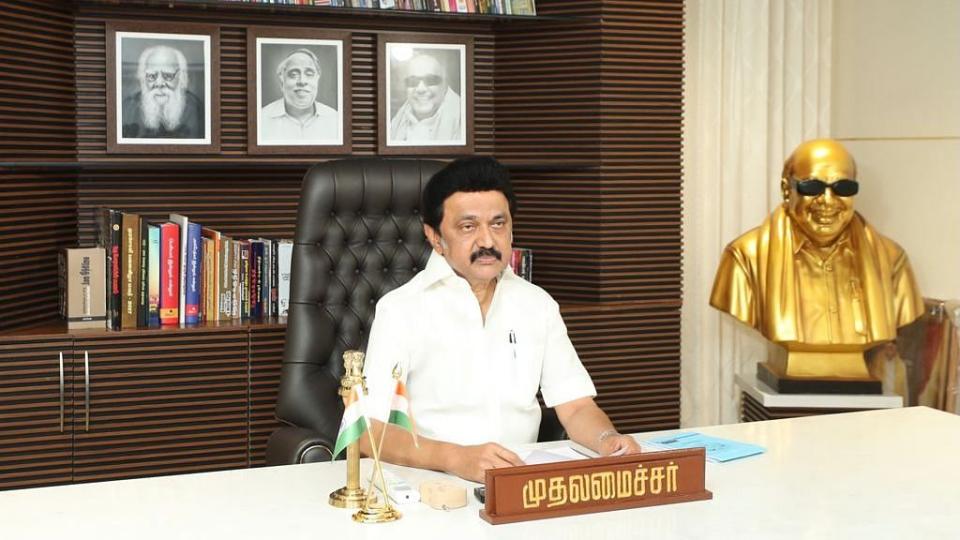Thamirabarani: 1155 BC 'Civilisation' in Tamil Nadu Benefits Dravidian Politics

On 9 September, Tamil Nadu Chief Minister MK Stalin announced with conviction, “It is the government’s task to scientifically prove that the history of the Indian subcontinent should begin from the Tamil landscape.” He was speaking in the TN Legislative Assembly, after new archeological evidence, confirmed by Texas based Beta Analytic Testing Laboratory, revealed that rice and soil found in a pot excavated from Shivakalai, in Tamil Nadu's Thoothukudi district, date back to 1155 BC.
Archeologically, the findings are exciting as they reveal that there could have been an urban civilisation in Southern India, similar to the Indus Valley Civilisation that existed in the North, a few centuries earlier.
Interestingly, this discovery has also given a new impetus to Dravidian politics in the state.
Here’s how.

The urn found at Shivakalai, Thoothukudi.
Dravidian Civilisation: From Periyar to Karunanidhi
In the 1920s and '30s, Periyar EV Ramasamy, conceptualised a south Indian political identity called Dravida Nadu, asserting the existence of a Dravidian civilisation predating what he believed was an ‘Aryan invasion’ of southern India. This civilisation, according to Periyar, was superior, if not equal, to its Aryan counterpart.
Geographically, the distinction between Dravidian land and Aryan land, as Periyar imagined, would be the distinction between south India and north India, respectively.
Periyar strongly opposed the imposition of Aryan culture, through texts like the Ramayana, which, according to him, depict Dravidians as inferior. For instance, Dravidians are depicted as apes (Hanuman) and Asuras (Ravana) in the Ramayana, he claimed.
Periyar’s thinking influenced CN Annadurai who had joined the former’s Justice Party in 1935. Justice Party was renamed Dravida Kazhagam. Annadurai split from this in 1949 and established the Dravida Munnetra Kazhagam (DMK), the current ruling party of Tamil Nadu. Annadurai was the first chief minister of Tamil Nadu. Dravidian identity remained central to his and the DMK's politics.

Periyar EV Ramasamy and CN Annadurai.
While the concept of Dravida Nadu was core to the constitution of DMK, Annadurai later on, also batted for Tamil identity. Periyar too, during the later stage of his life shelved the Dravida Nadu idea and was an advocate of Tamil identity.
But neither Periyar nor Annadurai stopped positioning Dravidians as a different race. In his Rajya Sabha speech of 1962, Annadurai famously said, “I belong to Dravidian stock. I am proud to call myself a Dravidian. That does not mean that I am against a Bengali or Maharashtrian or a Gujarati.”
The Dravidian movement, during the times of Annadurai had vehemently opposed imposition of Hindi in Tamil Nadu. For the DMK, the anti-Hindi agitation of 1965, was a watershed moment, when the party, over and above the assertion of a Dravidian identity (read Tamil identity), started vehemently demanding greater autonomy for states in the Indian union.
M Karunanidhi, five-time Chief Minister of Tamil Nadu, was a product of these times. He was the intellectual and political heir of Annadurai. His political legacy is now inherited by MK Stalin, his son and current chief minister of Tamil Nadu.
Meanwhile, MG Ramachandran, who founded the All India Anna Dravida Munnetra Kazhagam (AIADMK) in 1972, too was influenced by Annadurai. AIADMK, had in fact stemmed from DMK.

MGR and Karunanidhi, friends and colleagues in the film world, later turned political rivals.
This means, at the heart of DMK and AIADMK’s politics are the ideals of a Dravidian identity, and to an extent, a Dravidian civilisation. After DMK won 37 out of 38 Lok Sabha seats in 2019, Stalin wrote to the party cadre, “The days of the idea that Hindi-speaking states alone are India, have vanished.”
Inching Closer to Proof of Dravidian Roots
India was home to the Indus Valley Civilisation that existed between 2,500 and 1,700 BC. As per current geographical boundaries, the civilisation thrived in the Punjab and Sindh provinces of Pakistan, and in parts of Gujarat, Rajasthan, Haryana and Punjab in India.
But Tamil Nadu’s State Archeology Department had wanted to explore remains of, what it called another civilisation in southern India, evidence of which was found along the banks of Thamirabarani river, which was once called the Porunai.

Excavation at Shivakalai.
In 2014, the Tamil Nadu archeology department wrote to the Archeological Society of India (ASI) requesting permission to undertake an excavation at Keezhadi, at the border of Madurai and Sivagangai districts.
While ASI did not approve of this, the state government, then under AIADMK, went ahead and undertook the excavation in 2017. Subsequently, findings from Keezhadi gave evidence, in 2019, that the settlement at this site was 2,600 years old, dating back to 600 BC.
Now, the findings at Shivakalai, 200 kilometers away from Keezhadi, from where rice and soil were tested, have given evidence that settlements in Tamil Nadu date back another 600 years, to 1155 BC.
In political terms, the race here is towards finding, what Stalin has called “Tamil roots”, which date back to at least the Indus Valley period.
If such evidence emerges, it would mean that in Tamil Nadu and in some other parts of south India, there existed a civilisation that was till now unexplored, because the archeological focus was always on the Indus Valley.
The DMK government now plans to conduct excavations in other parts of Tamil Nadu, Kerala, Karnataka and Andhra Pradesh.
What is being looked into, is also the nature of this 'Tamil civilisation'. How advanced were these early inhabitants of Tamil Nadu? In Tamil Nadu’s Sangham literature, from first to fourth century AD, there are references to an urban landscape.
Adding to this, evidence has already emerged from the Keezhadi cluster – Agaram, Keezhadi, Konthakai and Manalur – that there existed people who dealt in currency that predates Mauryan period in north India. And now, in Shivakalai, there is clear evidence of 'cultivated rice' (read civilisation) dating back to 1155 BC.

Excavation at Shivakalai.
Meaning, what is being uncovered could be the remnants of an ancient civilisation which, according to Tamil Nadu’s archeology department, could have had trade transactions with other contemporary urban civilisations.
But beyond archeological significance, the search for ‘Tamil roots’, is also an extension of the politics of Periyar and Annadurai, who vouched for years, that in south India – particularly Tamil Nadu – there existed a people who were of a “different stock” from the rest of the country. A people, who were as advanced, if not more, as those who lived in the Indus Valley.
BJP, DMK at Loggerheads Over Tamil Identity
The archeological evidence that complements Dravidian ideology, is almost in opposition to what DMK's political rival in the state, the Bharatiya Janata Party, has been projecting. Speaking to Hindustan Times, BJP’s state president, K Annamalai said he “does not want to fit into the mould of a Dravidian politician”. Speaking to The Quint, Tamil Nadu’s BJP leaders had earlier said that the national party will not adapt to suit Dravidian politics.
In Tamil Nadu, the BJP can reap dividends only if an affinity towards national political players outweighs the support for the Dravidian parties.

MK Stalin with photographs of Periyar EV Ramasamy, CN Annadurai and M Karunanidhi in the background.
In contrast, the DMK has been drumming up Tamil sentiment – opposing the 'imposition' of Hindi and NEET – against the BJP and the national politics it stands for. As the 2021 Assembly elections gave a clear win to the DMK, for now the BJP is lagging.
Moreover, the 3,200 year old urn from Shivakalai, has given additional ammunition to the DMK’s political ideology.
Widespread appreciation for the archeological findings, as reflected by statements of Tamil intellectuals and political leaders, shows that the DMK can bank on the 'distinctness of Tamil identity' to oppose any national party, including the BJP.
Stalin does hope that further findings will help rewrite the ancient history of Tamil land. Will further excavations also help towards the making of a Dravidian politics that is backed by archeological findings?
. Read more on Politics by The Quint.Thamirabarani: 1155 BC 'Civilisation' in Tamil Nadu Benefits Dravidian PoliticsSunday View: The Best Weekend Opinion Reads, Curated Just For You . Read more on Politics by The Quint.

 Yahoo Movies
Yahoo Movies 